YAG-3, YAG-4 and YAS-1. Evolution of the line of Yaroslavl trucks
It should be recalled that in the early years the development of the domestic automotive industry, primarily freight, faced serious problems in the field of engines. Soviet industry still could not supply large quantities of all the motors with the desired characteristics, and the import was associated with certain difficulties. Difficulties in finding suitable engines had the most serious influence on the development of Yaroslavl cars.
Motor problem
The first Russian five-ton I-5 was completed with the Hercules-YXC-B gasoline engine with the 93 horsepower. American production. Deliveries of overseas engines, which began in 1929, allowed the construction of a little less than 2300 I-5 trucks, as well as more 360 I-6 bus chassis. However, in 1931, new decisions were made that hit truck production. By this time, the delivery of American engines had ceased, and the stock of such products, according to the order of industry leaders, should have been used in the construction of buses and some other equipment. As a result, the I-5 were left without engines and could no longer be produced in the existing configuration.
Design department of YAGAZ led by V.V. Danilov started a new search for solutions and suitable components to continue the production of five-ton trucks. It was found that the only real alternative to the imported product is the Moscow AMO-3 engine - a copy of one of the Hercules engines. This engine developed power only 66 hp, but did not have to choose. Yaroslavl designers started processing the I-5 machine for a new engine.
At the design stage, it became clear that the new truck would be significantly different from the previous one, and therefore it should be considered a completely new car. This led to its own designation. By the time the design work was completed, a new nomenclature of Yaroslavl technology was adopted. In particular, the YAG index appeared - “Yaroslavl truck”. To these letters, a number from the engine designation was added, and the finished car was called YAG-3.
The power unit for YAG-3 could only be based on the AMO-3 carburetor engine, which was inferior in performance to the foreign Hercules-YXC-B. For this reason, the new car had to be different from the I-5 for the worse. Calculations showed that the 66-strong engine will force to reduce the load capacity from the original 5 to 3,5 t. However, the designers have found a way to keep this parameter at the same level. To do this, they had to rework the transmission and sacrifice speed.
New modernization
The process of redesigning the I-5 truck to the new YAG-3 was not easy. To install the new power unit required some modifications to the design. In addition, the design department YAGAZ found ways to improve the design of the machine in technical and technological terms. At the same time, the solutions that have already been worked out and checked by time, including those applied involuntarily, remained due to technological limitations.
The basis of the machine remains the same frame, assembled on rivets from standard channels. Its front end was slightly modified in accordance with the design of the new engine, but otherwise it remained the same. The layout has not changed much. In front of the frame were placed the engine and gearbox, behind which was located the cabin. Rama supplemented with a new bumper of greater width, connected with the wings of the wheels.
Under the hood, there was a straight six-cylinder gasoline engine AMO-3 with a power 66 hp, as well as related equipment, including a Zenit type carburetor. The engine of the new type was less demanding for cooling in comparison with the “Hercules”. This has reduced the volume of the cooling system, reduce the cellular radiator, and with it the entire hood. In addition, the number of louvers on the sides of the bonnet has been reduced.
Through a dry clutch, the engine interacted with the AMO-3 gearbox. This product had four forward gears and one reverse. The box was controlled using a standard floor lever. From the box there was a drive shaft connected to the rear axle main gear. As before, the shaft was in a conical casing, which provided a mechanical connection between the bridge and the frame.
The management demanded to keep the load capacity in 5 t, but the engine of lower power did not allow to do this when using the existing transmission. Yaroslavl engineers decided to sacrifice the mobility of the machine. The gear ratio of the rear main gear increased from the original 7,92 to the maximum allowable 10,9. Further change of this parameter threatened with excessive loads and destruction of the aggregates. The redesigned main gear gave an increase in traction characteristics, but significantly reduced the maximum speed.
Chassis remained the same. It consisted of a front axle with single steering wheels, suspended on leaf springs. The rear axle had the same suspension, but was distinguished by the presence of a transmission and a twin-busbar. Both axles were equipped with pneumatic brake system with power amplifier.
The design of the cockpit from I-5 during the development of the YaG-3 has not changed. On the wooden frame were installed boards and metal sheets of plating. The doors were provided on the sides. There were lifting front windows and glazed doors. The latter was equipped with a window regulator. Cab ergonomics, including the composition of government, has not changed.
The cargo area, like the cab, was borrowed unchanged from the previous truck. Used wooden platform with folding sides. In the future, local auto repair shops could remove a regular body and install new devices in its place, which would turn a truck into a special vehicle.
The use of the new engine made it possible to reduce the size of the hood, but in terms of overall dimensions the YAG-3 car did not differ from its predecessor. Length - 6,5 m, width - 2,46 m, height - 2,55 m. Curb weight is almost not changed - 4750 kg. Payload - 5 t. Like I-5, the new car had a full mass of about 9,7 t. Processing the main gear ensured the preservation of payload, but the maximum speed fell to 40-42 km / h.
On the track and on the conveyor
The widespread use of ready-made units and the maximum unification with several trucks of the latest models made it possible to speed up development work on the YAG-3 theme. Already in the first months of 1932, YAGAZ completed the design and soon built prototypes for testing. Design characteristics were confirmed on the tracks. Indeed, the car carried the 5-ton load, but moved more slowly than its predecessor.
In a different situation, YG-3 would not go into the series, but the circumstances were in favor of this car. Yaroslavl Automobile Plant could build the necessary number of new trucks, and the AMO enterprise could provide it with the necessary number of power units. Thus, the YAG-3 was worse than the I-5 in a number of characteristics, but at the same time, unlike it, it could be produced further. By the middle of 1932, YAGAZ established a full-scale mass production of new cars with Moscow engines.
Production of the YAG-3 continued until the 1934 year. In about two years in Yaroslavl I built an 2681 car of this model. Only side trucks were built; special equipment at their base was made on the ground by various workshops. Finished equipment was transferred to different structures of the Red Army and national economy. First of all, the five-ton machines were required by the ground forces, construction organizations and the mining industry. Other customers were not ignored.
During operation, serial YaG-3 confirmed their strengths and weaknesses. The main advantage of this car was a high load capacity. In this regard, Yaroslavl trucks at one time had no equal. At the same time, the new car differed from its predecessor in its speed and dynamic characteristics. 66-strong engine made it difficult to disperse and limit the speed. At the same time, some problems characteristic of previous machines remained, primarily related to ergonomics.
New engine and new model
The main problems of the YAG-3 truck were related to the insufficiently powerful power unit based on the AMO-3 engine. At the first opportunity, the Yaroslavl Automobile Plant (the name was introduced in 1933) replaced the existing units with new devices. Such a restructuring affected only the hood equipment and transmission, but the resulting car was decided to be completely new. She was given the name YG-4.
Instead of the power unit from the Moscow AMO-3 truck on the new YAG-4, they suggested using elements of the newest ZIS-5 machine. The engine of the same name developed the power of the 73 HP. and in its construction differed little from the old AMO-3. A four-speed gearbox ZIS-5 was connected to the engine. Installing a new power unit required to modify the existing machine, but did not lead to its radical restructuring.
YAG-3 and YAG-4 did not have any external differences associated with the use of different engines. The only noticeable difference in exterior lay in the size and shape of the front bumper. On the YAG-4, a wider part was used that completely covered the wings of the wheels. Despite the use of the new engine, the main characteristics remained at the same level.
The production of the YG-4 machines was launched in 1934, and the YG-3 construction was halted. The release of the YAG-4 lasted for two years; during this time, it was possible to build almost 5350 trucks. The main recipients of such equipment were the army and various enterprises in need of lifting cars.
In 1935, YAZ developed its first dump truck - YAS-1. This machine was based on the design of the YG-4 and had a number of characteristic features. First of all, it was equipped with a hydraulic pump driven by a new transfer case through a separate driveshaft. Oil came in two hydraulic cylinders, responsible for lifting the body. The rear of the chassis frame has been reinforced to transfer loads from the swing body. The body itself is made on the basis of the existing one. In this case, the sides were fixed and strengthened, and the inner surface was covered with steel sheet. The tailgate was mounted on the axis in the upper part and swung freely with the locks open.
New devices for the YAS-1 dump truck weighed almost 900 kg, which should have led to an increase in curb weight in comparison with the YG-4 basic truck. Because of this, the payload had to be reduced to 4 t. The driving characteristics remained the same. It took 25 seconds to raise and lower the body.
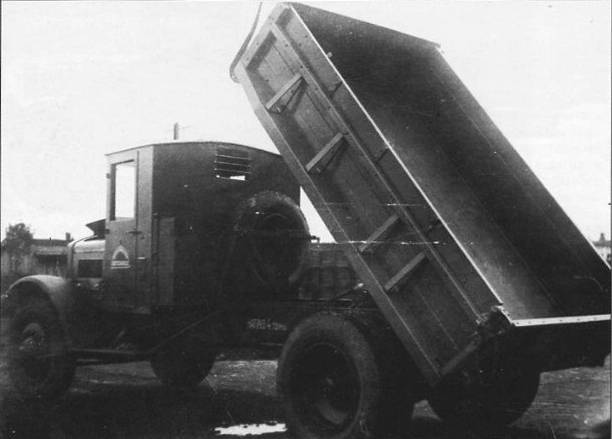
The same type of car from a different angle, you can consider the body structure. Photo of the magazine "M-hobby"
With 1935, YAS-1 and YAG-4 were produced in parallel. Before the base truck production was completed, YAZ managed to build the entire 573 dump truck. Such equipment was intended mainly for construction and mining organizations working with soil and other bulk cargoes.
Family development
The first cars of the YAG brand, built on the basis of I-5, were produced before the 1936 year. For several years, the Yaroslavl Automobile Plant managed to build more than 8600 trucks and heavy-duty dump trucks. This equipment was actively working in various industries and contributed to the construction of our economy. However, despite the possibility of building in large quantities, YAG-3 and YAG-4 did not fully suit the automakers and operators. It required further development of the design and the creation of new samples.
In 1936, the YG-6 truck went into the series. He retained some of the features of his predecessors, but he also had serious differences. For several years, this machine has become the most mass five-ton of the Yaroslavl Automobile Plant. Its assembly lasted until the early forties and was stopped only during World War II. It should be noted that the production turned down due to the unavailability of some units. With their presence, YAG-6 would continue to roll off the assembly line and replenish the fleet of the Red Army, bringing victory closer.
The Yaroslavl truck I-4 became the founder of a whole family of high-load vehicles, and the next I-5 eventually turned out to be the basis for all subsequent cars. When creating the first YG brand vehicles, the development of all previously laid ideas continued, and eventually led to the appearance of the next YG-6 truck. This car of a five-ton class, as well as its predecessors, is worthy separate consideration.
Based on:
http://denisovets.ru/
http://gruzovikpress.ru/
http://autowp.ru/
http://autohis.ru/
http://opoccuu.com/
Shugurov L.M., Shirshov V.P. Cars Country of the Soviets. - M .: DOSAAF, 1983.
Dashko D. Soviet trucks 1919-1945. - M .: Automobile archival fund, 2014.
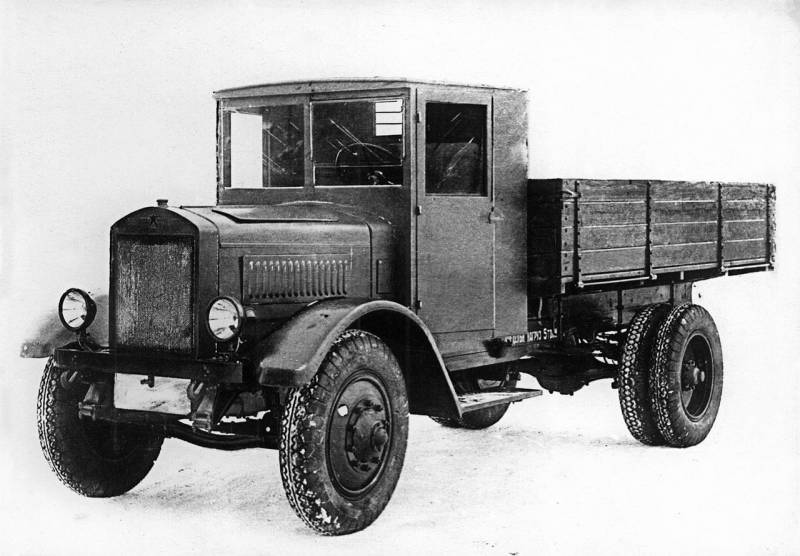
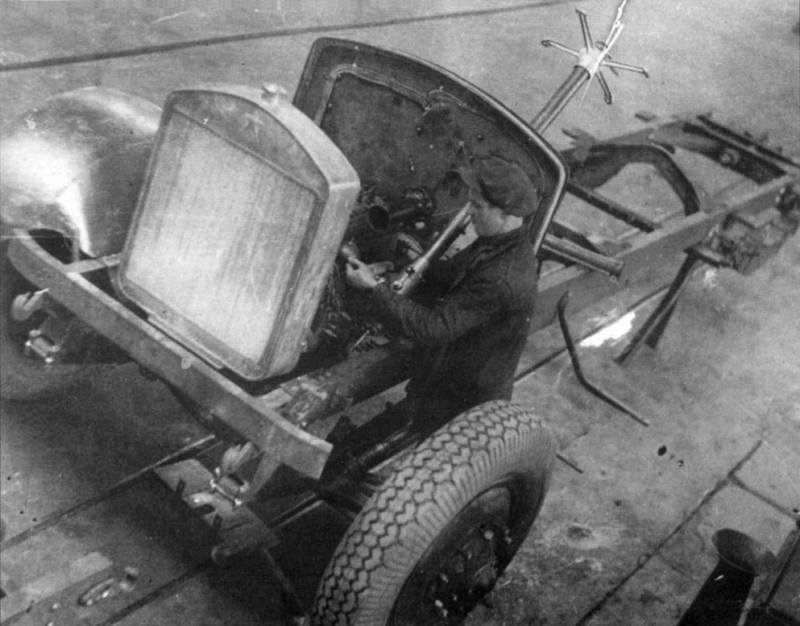
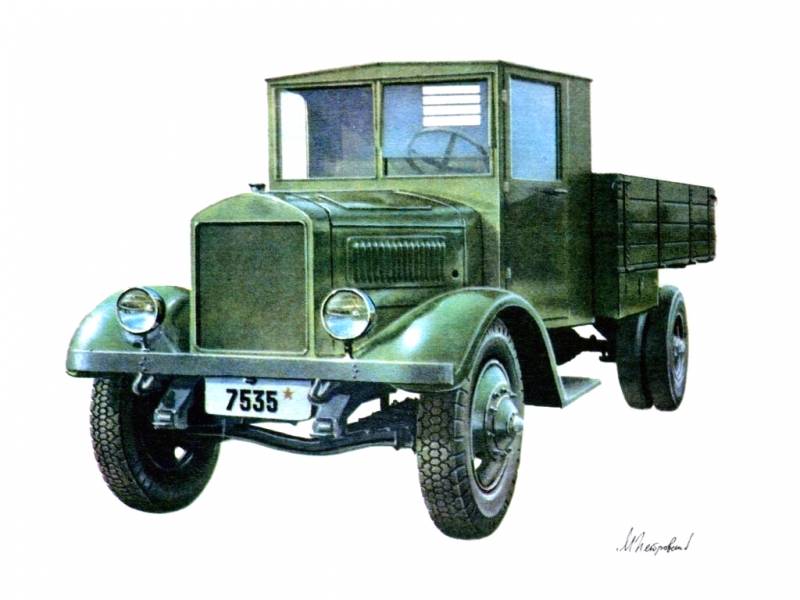
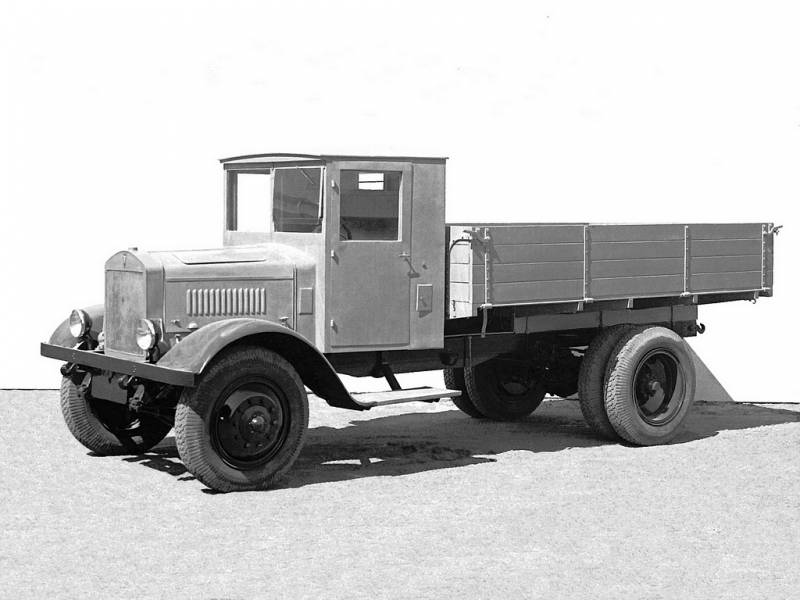
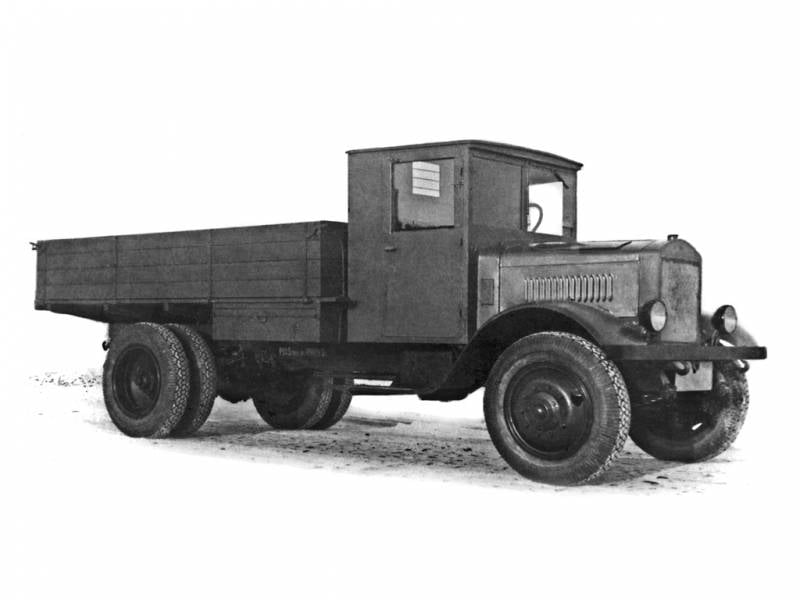
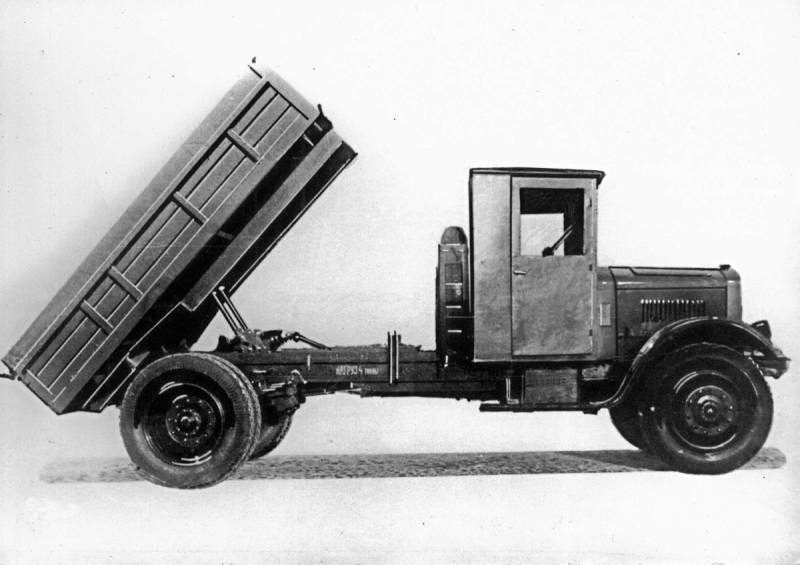
Information